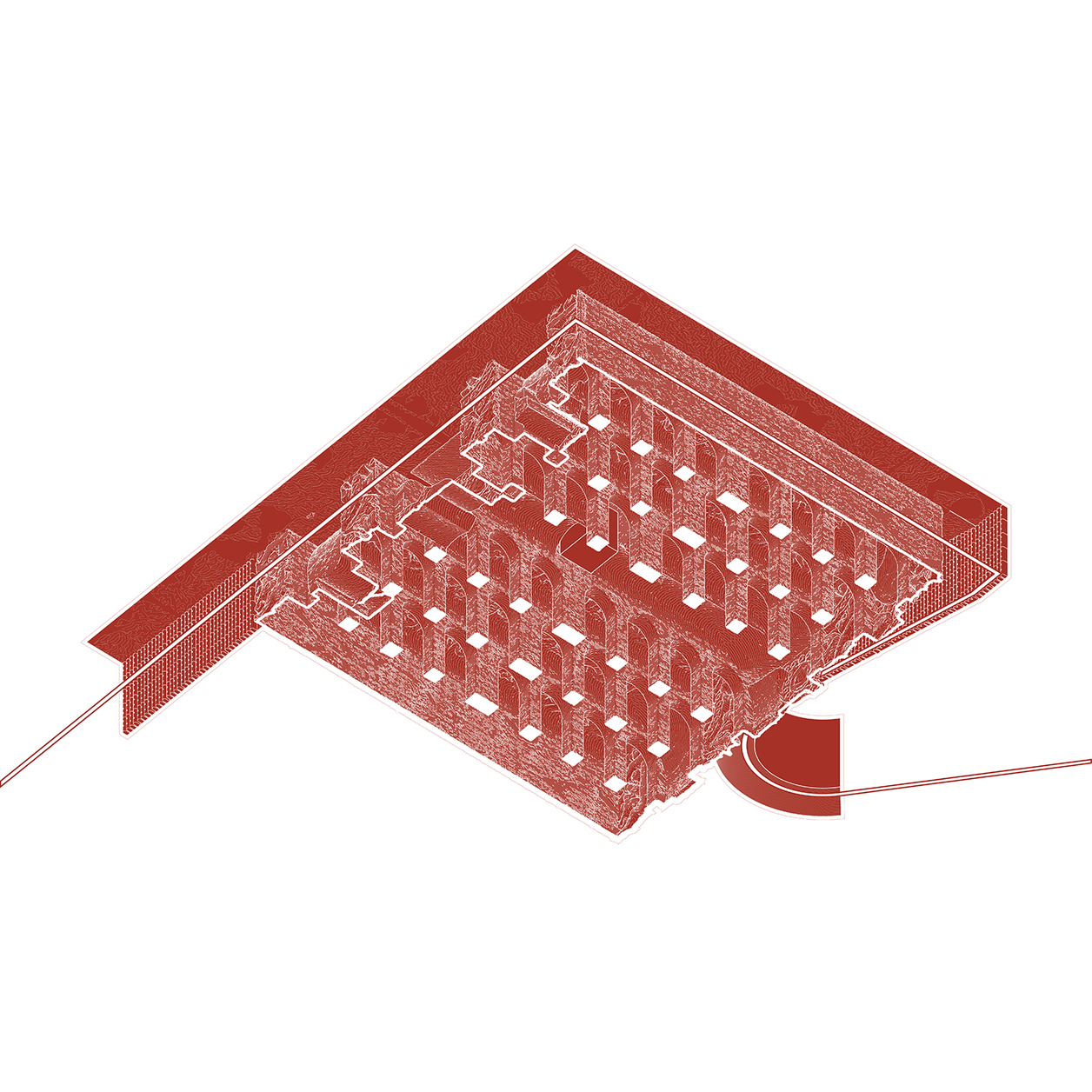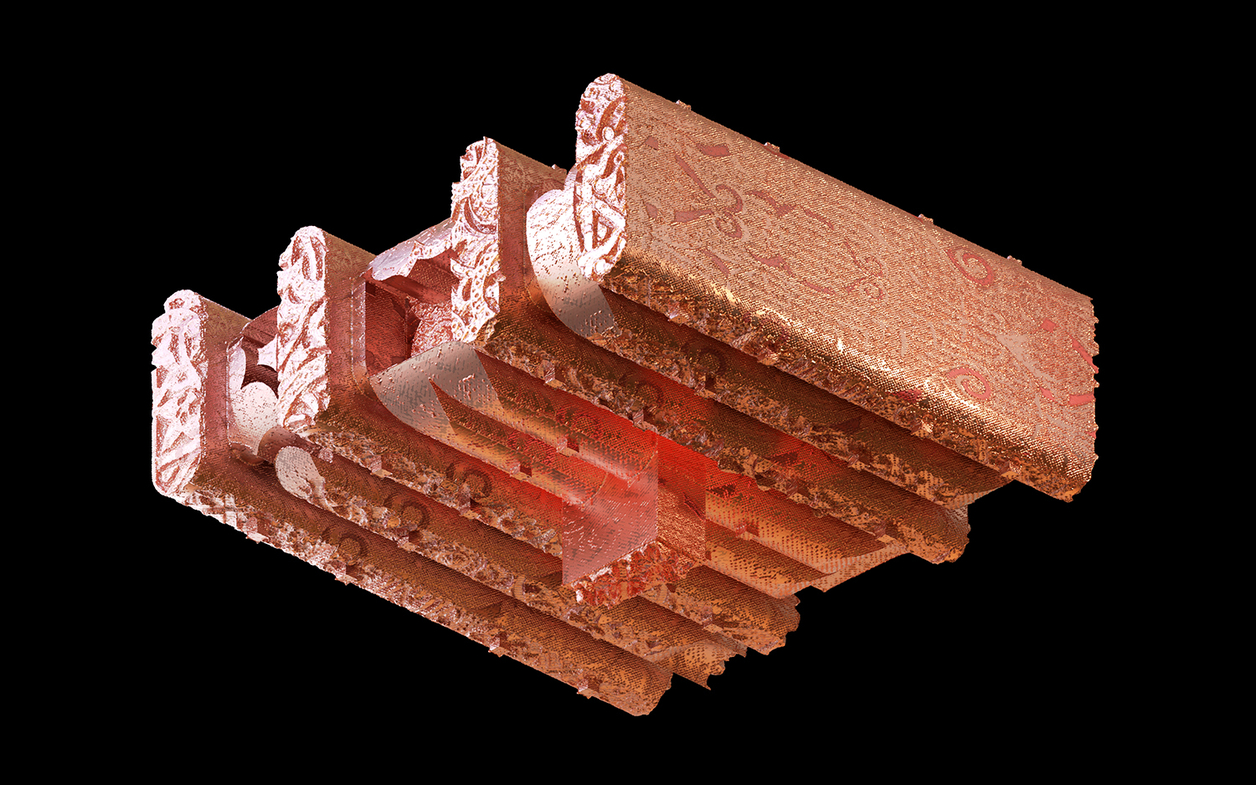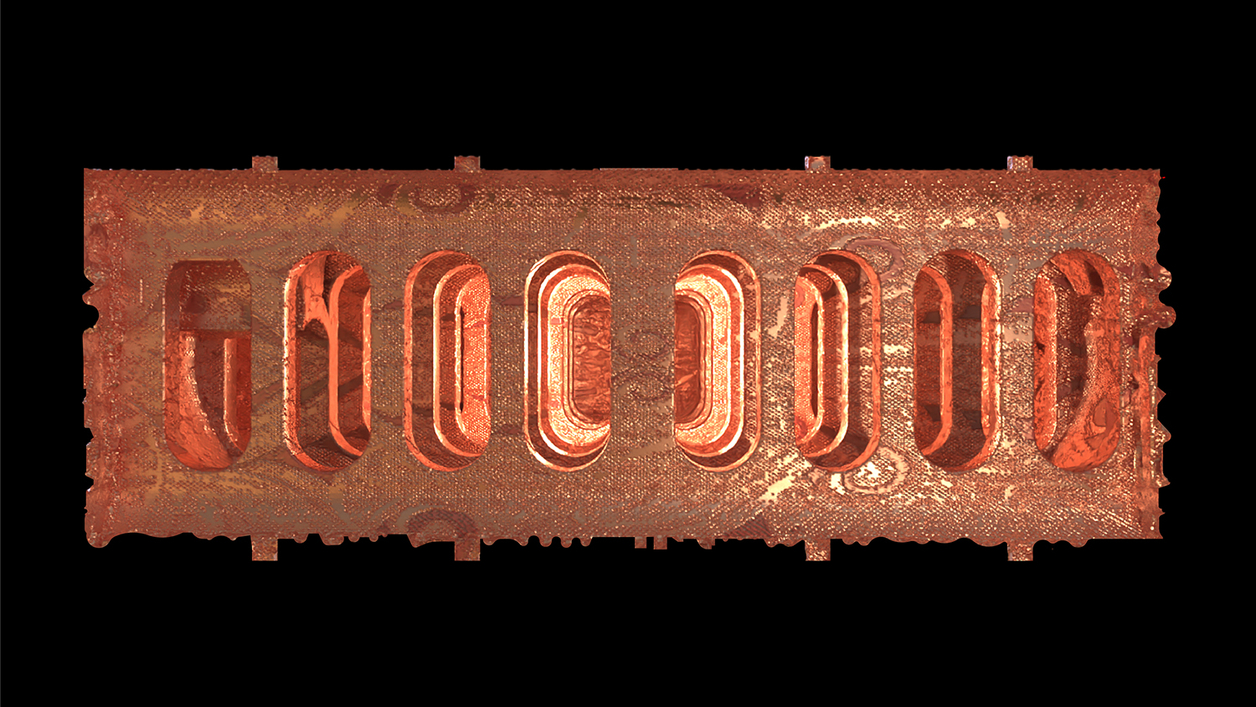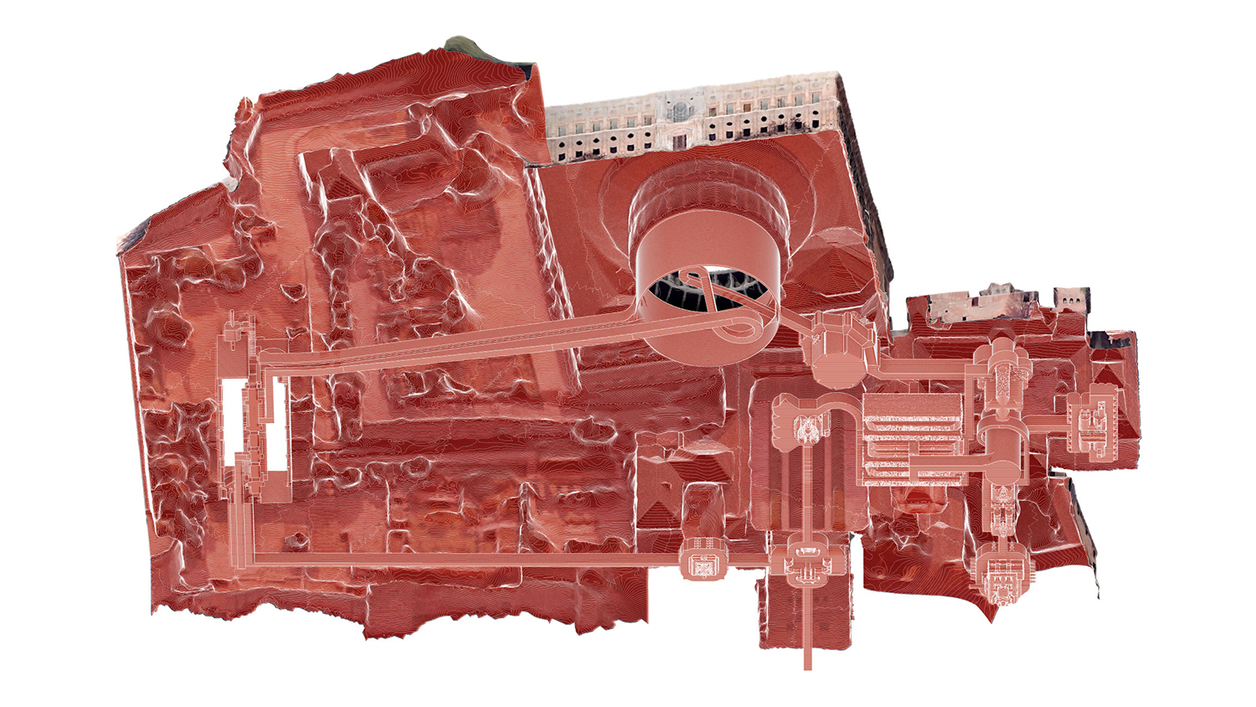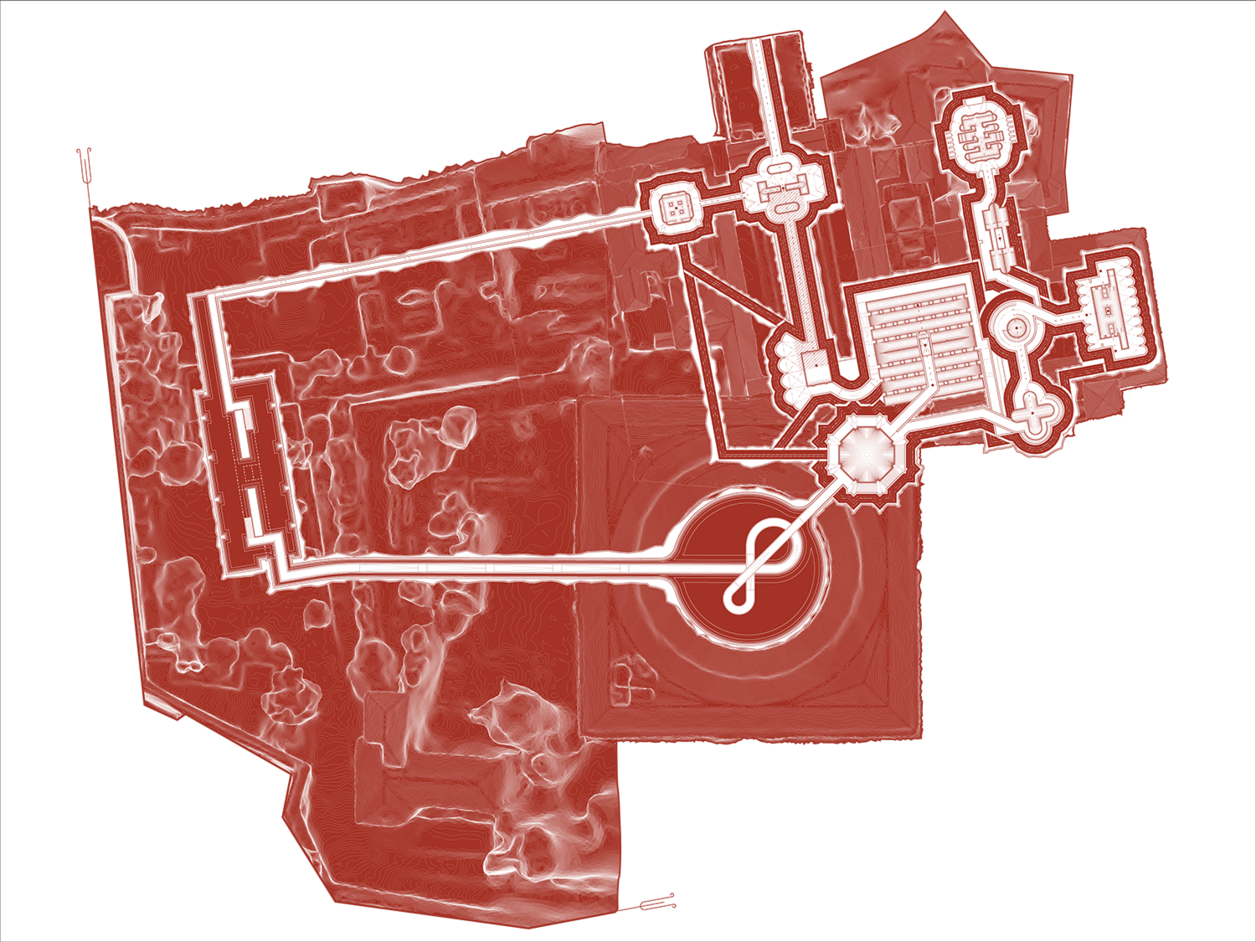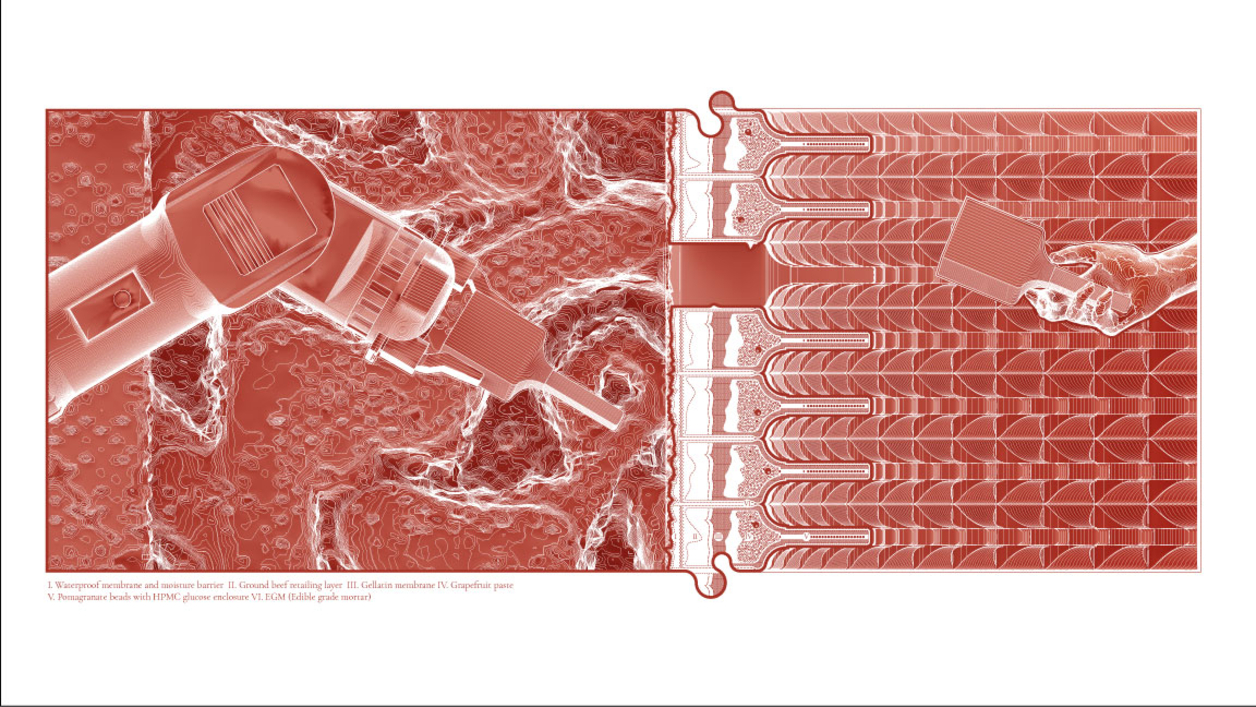Thesis: Paul Germaine McCoy
There is a pattern of architects looking at history in a non-linear post Enlightenment lens, framing ancient architectures as artifacts of contemporary devotion. Both seeking forms of aesthetic innovation and foregrounding narratives that reflect that darkness of history while projecting new speculations into its gaps and unknowns. Hidden underneath the Alhambra, a new Restorative Garden considers a renewal of ornament at multiple scales: the site of the Alhambra, the body of the visitor, and the city of Granada.
The design research positions water and ornament as essential forces of culture, positioned by history as visible and hidden representations of the void (water) and the surface (ornament). A non-western and non-linear lens challenges our western definitions of ornament as passed down by architecture history. The thesis proposes an ephemeral edible garden underneath the Alhambra that renews the use of the dormant cisterns and transcend the abstraction that makes ornament into something that can be experienced and read anew.


